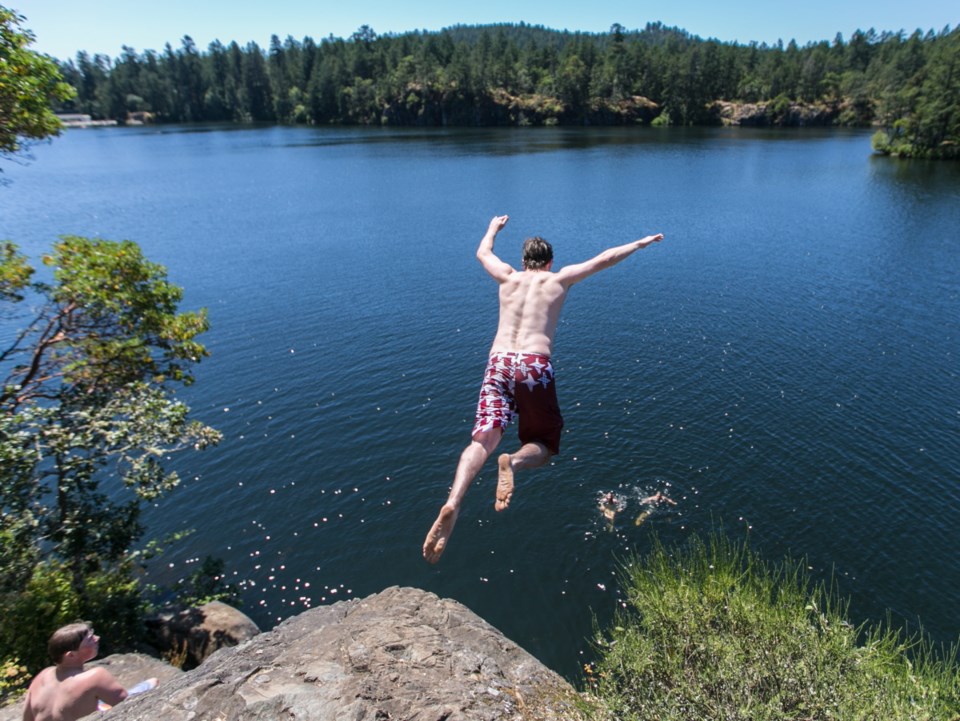A 26-year-old woman is in hospital with serious head and back injuries after she tried to jump off a cliff at Thetis Lake. For the woman and those who care about her, it’s a devastating end to what should have been a day of summer fun.
Despite calls for action to prevent such tragedies, there is little the Capital Regional District can do to stop this from happening again. Even fences are unlikely to deter young people who are bent on taking the plunge from the clifftops.
In Wednesday’s incident, the woman was apparently trying to jump from the cliff when she slipped and hit her head as she fell. Other people in the water saved her life, and first responders pulled her out and got her to Victoria General Hospital.
Teens and 20-somethings have been jumping off cliffs into water for as long as there have been teens and 20-somethings. Most of the time, they bob to the surface with a whoop of exhilaration.
But sometimes, they don’t come up at all.
Some hit the cliff on the way down. Others hit the water hard and are knocked out. Some drown without surfacing. No one wants that to happen at Thetis Lake.
View Royal Fire Chief Paul Hurst, whose firefighters have to rescue the injured, doesn’t know how to solve the problem, but says something has to be done.
“I don’t know how you monitor this or control it. [But] we can’t ignore the fact that people are being seriously injured and killed,” he said after the young woman was injured.
The CRD administers the park, and Hurst wants to see “a serious conversation” about solving the problem.
It’s not confined to Thetis Lake, of course. According to the B.C. Coroners Service, 128 people accidentally drowned between 2008 and 2016 by jumping or falling into water across the province. Of those, 110 died by falling into water and 18 died after jumping from heights.
Altogether, 666 people drowned in B.C. in that period.
There is good news in preliminary statistics that suggest the number of drownings in 2016 were down from previous years. However, seven people have drowned in one week.
With school out and summer vacations begun, more people are on and around the water. It’s easy to get complacent. Whether it’s boaters without life-jackets or tourists who want to get a little closer to the waterfall for a better picture, complacency can kill.
For cliff-jumpers, though, thrill-seeking is the killer.
As Hurst pointed out, fences are not likely to keep out young people who are determined to jump. They would just climb over the barriers.
The CRD stopped staffing the Thetis beach with lifeguards in 2003. View Royal Mayor David Screech would like to see them brought back for June, July and August, although he doesn’t know if the district can make it happen this year.
Lifeguards would certainly help with overall safety and can reinforce the rules, but they can’t stop people from jumping unless one of them is stationed at the cliff, which seems unlikely. Youth, peer pressure, drugs and alcohol are powerful contributors to dangerous decisions.
Education seems like a weak suggestion, but, as with boaters and swimmers, persuading people to be smart around the water could be the only practical option. The more often the message is hammered home, the greater the chance that someone will listen to the quiet voice of caution.
We can’t tie a lifeguard to everyone who goes to the lake.



